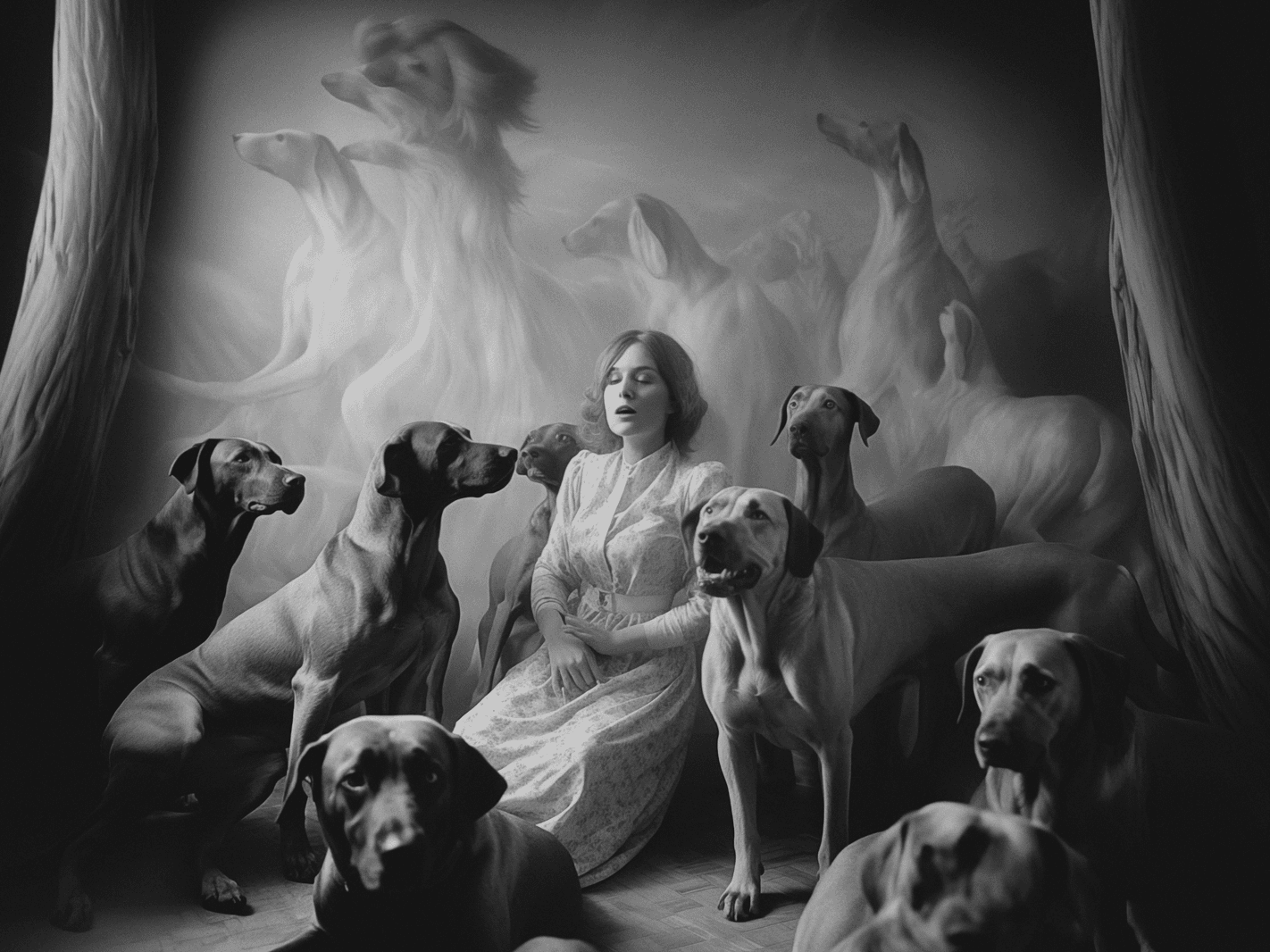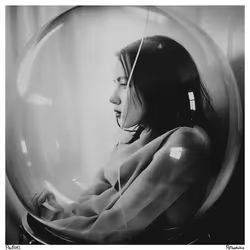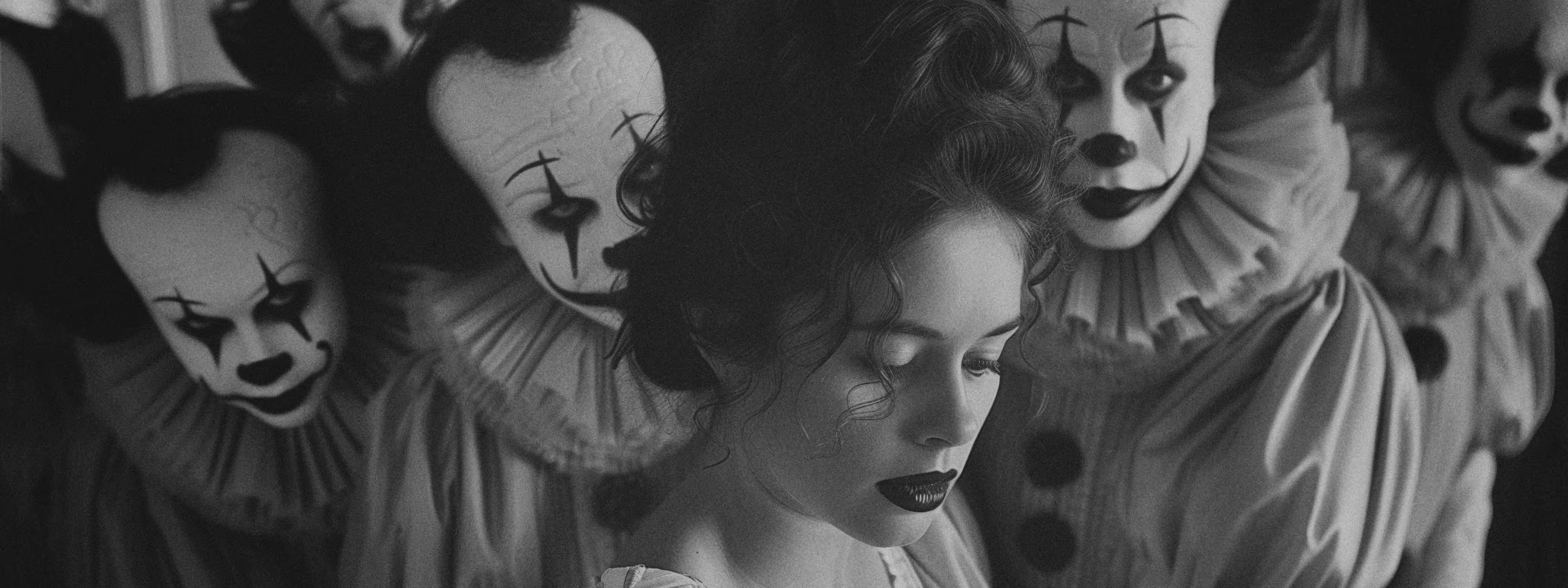
This artistic work of cultural and introspective research began in March 2023 through the first notes and attempts to search for an aesthetic/narrative line. A post-photography work consisting of 123 unique works (1/1) .
After receiving a diagnosis of autism in 2018, I began a long and intense journey of awareness and well-being that a few years ago led me to delve into my relationship with phobias. Having as a comorbidity a generalised anxiety disorder, which fortunately I now manage very well, I’ve always co-existed with some specific phobias. During this lengthy research I discovered that phobias are more widespread than I thought and that the majority of the world's population avoids this type of intense anxiety, which affects daily life. And then I started to give them a "face", experimenting with post-photography.

This artistic research is not intended to have a clinical approach, except for some basics, but to highlight the phenomenon from a more anthropological point of view.
Following the principles of the social model of disability, it’s natural for me, however misunderstood or not, to focus more on the environment than on the person. By environment I mean the set of factors and characteristics that determine experience in a specific space, including people, relationships, objects, sensory stimuli, social dynamics. It’s not the person who is not ‘able’, but the environment that ‘disables’ the individual. And this touches us all in its various nuances. This same model is applied to phobias in this collection.

This artistic research is not intended to have a clinical approach, except for some basics, but to highlight the phenomenon from a more anthropological point of view.
Following the principles of the social model of disability, it’s natural for me, however misunderstood or not, to focus more on the environment than on the person. By environment I mean the set of factors and characteristics that determine experience in a specific space, including people, relationships, objects, sensory stimuli, social dynamics. It’s not the person who is not ‘able’, but the environment that ‘disables’ the individual. And this touches us all in its various nuances. This same model is applied to phobias in this collection.

All the artworks have various traits and the contamination of them generates interesting scarcities, sometimes related to the phobia itself, wandering through history, literature, art and popular culture to be totally contaminated by the immense human knowledge.
Each image is imbued with meanings and symbols. The ID token too is assigned individually following the Neapolitan Kabbalah, precise historical dates or esoteric numbers, and even the names of the subjects refer to historical cases, famous people or etymologies related to the phobia. Happy discovering, contact me if you discover anything and I will be happy to reveal the connections that I thought. I also hope that new ones can be born from the users themselves, cause obviously everything can be interpreted subjectively. In any cause, I prepared a specific guide to discover all the artworks.
About attributes, it’s very difficult to assign a specific label to phobias, because some belong to more than one category. My subdivision is based on various factors, mainly due to what the picture says and socio-cultural characteristics, so it isn’t (absolutely) meant to be a scientific guide to them, but only a personal interpretation of them. But there's a lot of interesting attributes and scarcities. Enjoy!

Finally, a topic I care a lot about that set a (positive) limit from the very beginning: I would like these works to be visually and aesthetically accessible to those who coexist with phobias, being able to enjoy them and observe them without being triggered by them. This is why I preferred to seek a delicate aesthetic and narrative line rather than strong and attractive images. It certainly won't be possible for everyone, but I tried, with elegance.
I know people who experience a lot of phobias or are hypochondriacs, I want them to be "able" to enjoy the images. I have done some trials with some friend, and it worked, I hope it works again and again.

Here you will find all the information about the project, with a specific description of each phobia, with meanings and author's notes. It is a mix between a guidebook and a personal diary, with most of the notes I wrote while creating the works. You will also find more information about the creative process and the choice of language, information about the minting and little hints about the easter eggs scattered throughout the collection. It will be even more useful when the collection is revealed and each user will be able to discover phobias they didn't know existed. The guide is on the web3, via Mirror.xyz : https://mirror.xyz/0x2dF03775b120A966a9dc78d6c0262e20eD9697F0/L72LIIYkDRA-X2zduYAGq_rZTqBHchUe0Pw5Zl1FonY You can also find it in the links at the top (website logo)

Here you will find all the information about the project, with a specific description of each phobia, with meanings and author's notes. It is a mix between a guidebook and a personal diary, with most of the notes I wrote while creating the works. You will also find more information about the creative process and the choice of language, information about the minting and little hints about the easter eggs scattered throughout the collection. It will be even more useful when the collection is revealed and each user will be able to discover phobias they didn't know existed. The guide is on the web3, via Mirror.xyz : https://mirror.xyz/0x2dF03775b120A966a9dc78d6c0262e20eD9697F0/L72LIIYkDRA-X2zduYAGq_rZTqBHchUe0Pw5Zl1FonY You can also find it in the links at the top (website logo)

Who am I?
Difficult question, I can never answer. I could sum up my work in art and the common good. I'm a professional photographer, I work in the world of recreational therapy where I play various roles. I'm a neurodiversity trainer and autistic mentor, as I am autistic myself.
In summary, I bring art into my inclusive workshops, which helps me discover the diversity of human beings and I bring my own and their experiences into my art. It's all connected, difficult to explain, but definitely circular. I often use art to explain concepts in my mind, it is something that helps me and relaxes me and I do it for me first. It helps me to face myself, to put myself in the mirror. I love experimenting by mixing various photographic techniques, from analogue to post-photography. For many years I stopped publishing my work. About a year ago I started again. I love collecting NFT as much as creating them and I like how the concept of community is developing on the web3.


